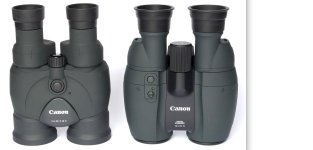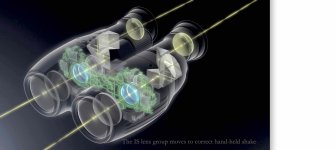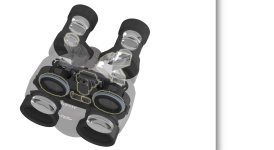John A Roberts
Well-known member

Roger has added to his reviews of the Canon IS lineup, with the addition of the 12x32 model.
See at: Canon 12x32 IS Review
It includes a detailed comparison to the 12x36 III version

In regards to Roger's comments on the optical construction, Canon only provides minimal details:
an objective of 7 lenses in 6 groups (including a protective glass), and; an eyepiece of 5 elements in 4 groups.
And the only image showing the internal construction is not of significant assistance
(other than making clear the use and orientation of the Porro II prisms):

Rogers reviews of the other Canon models can be found at: Binocular Reviews
John
p.s. For comparison, the different orientation of the prisms on the 10x30 (and 12x36) model:

See at: Canon 12x32 IS Review
It includes a detailed comparison to the 12x36 III version

In regards to Roger's comments on the optical construction, Canon only provides minimal details:
an objective of 7 lenses in 6 groups (including a protective glass), and; an eyepiece of 5 elements in 4 groups.
And the only image showing the internal construction is not of significant assistance
(other than making clear the use and orientation of the Porro II prisms):

Rogers reviews of the other Canon models can be found at: Binocular Reviews
John
p.s. For comparison, the different orientation of the prisms on the 10x30 (and 12x36) model:

Last edited:






